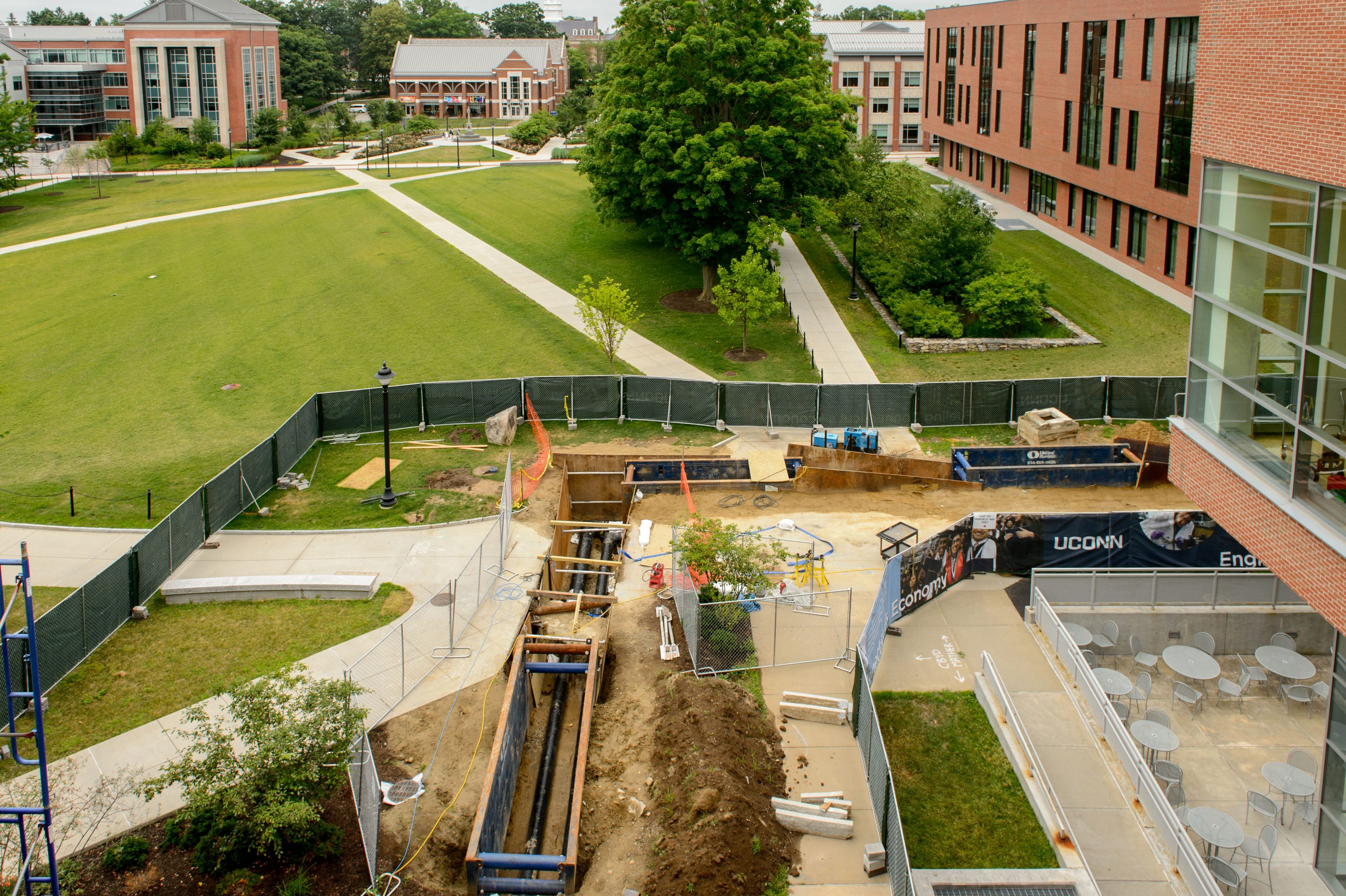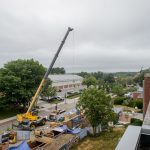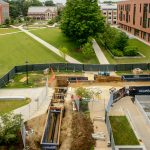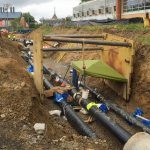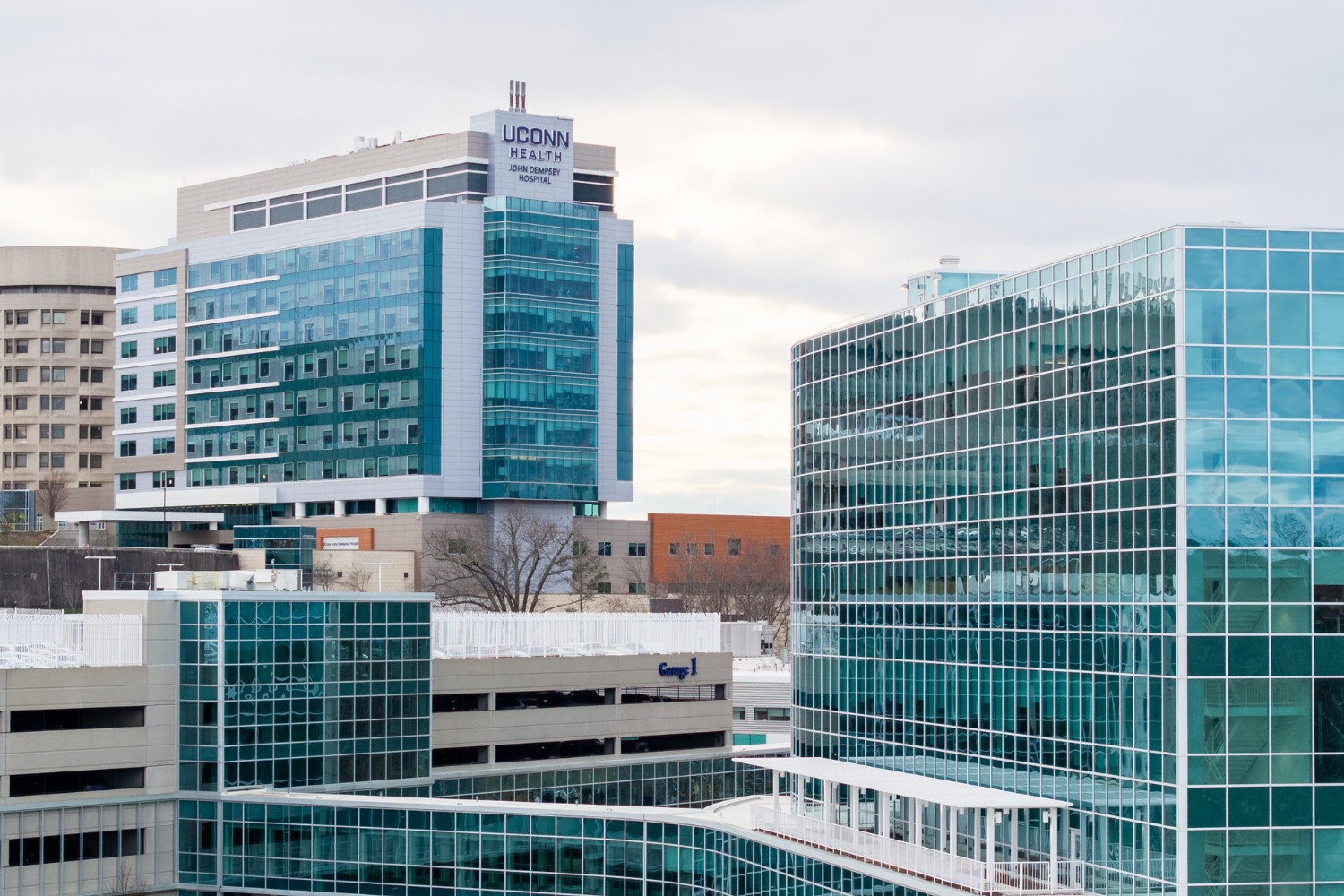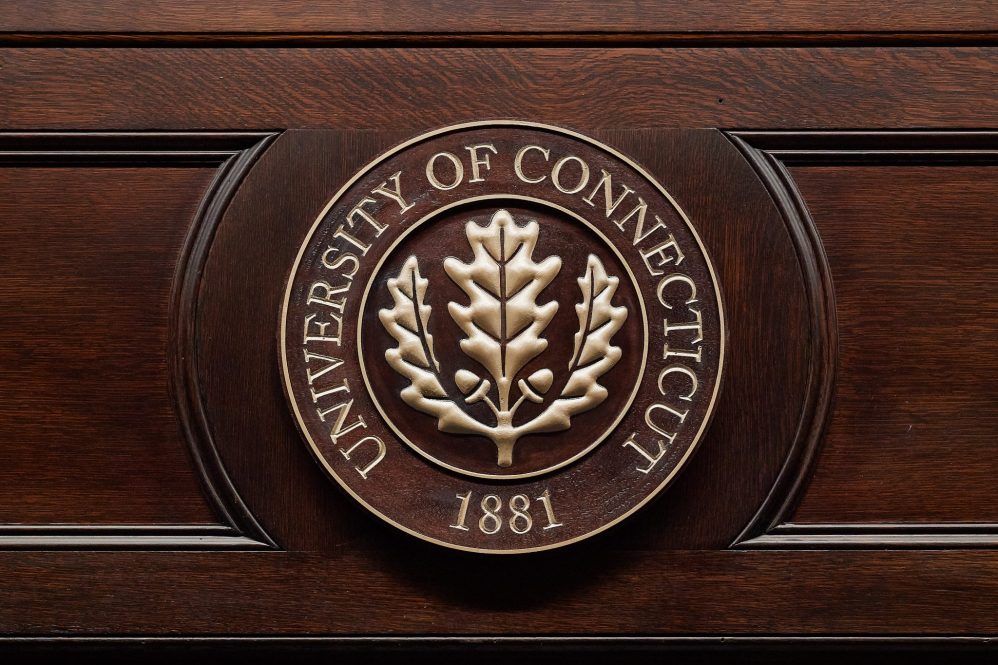All across Storrs this summer, layers of soil that haven’t seen light for decades are being dug up and tossed aside to let crews reach critical lines that provide water and steam heat to campus buildings.
Those lines, along with many sewer and electrical lines, are being replaced in a massive multi-year endeavor to upgrade UConn’s aging underground infrastructure. The project will help UConn save money, improve its energy efficiency and water conservation, and avoid the kinds of service interruptions that have plagued the campus in recent years.
Much of the work is being funded through the Next Generation Connecticut initiative, which Gov. Dannel P. Malloy and the General Assembly approved in 2013 to help UConn transform its campuses and curriculum over 10 years with $1.5 billion in capital improvements.
Because we provide all of our own utilities, we’re in many ways no different than many towns and cities that also have infrastructure challenges. — Scott Jordan
The dirt piles, screened fences, and heavy equipment around Storrs are far from glamorous, but UConn officials say the project is one of the University’s most important in recent decades because of the dire need to stabilize the underground utility network and the costs associated with it.
“We’re very fortunate that we live in a state where our governor and legislature recognize the fact that having reliable infrastructure is a critical need,” says Scott Jordan, UConn’s executive vice president for administration and chief financial officer.
With more modern pipes and connections, UConn’s utilities will run more efficiently and avoid the kinds of breakdowns that have caused class cancellations, the temporary closure of some academic and residential buildings, and other interruptions in recent years.
“Having infrastructure problems literally costs us money every day,” Jordan says, “and fixing those problems represents savings that will benefit UConn and its students.”
To make the Next Gen money stretch as far as possible, UConn is using its own funding for a portion of the work: replacing 2,800 linear feet of steam lines and upgrading other utilities along Hillside Road between the School of Business and the Jorgensen Center for the Performing Arts.
The $28 million expense, including the $14 million specifically allocated for the new steam lines, is projected to be entirely recouped through utility cost savings over the next 15 years.
Significant work also is taking place along North Eagleville Road and Route 195, where about 9,000 linear feet of steam lines will have been replaced by the end of summer.
Work is currently under way along Route 195 near the Towers Residence Halls and Dairy Bar, and around the corner on North Eagleville Road to the Lakeside Building. Future phases will continue westward on North Eagleville Road next summer to the intersection with Hillside Road.
Work is expected to continue throughout portions of campus each summer for the next few years, although it will be largely avoided during the regular academic year in order to minimize disruption.
Aging infrastructure
Many of UConn’s 29 miles of water lines in the core of campus were installed between 1914 and 1916, with others added over the decades as the campus expanded and new buildings were constructed. Most of the steam pipes are around 50 years old, well past their 30-year life.
Many of the other underground pipes, stormwater drain systems, utility lines, and electrical circuits also are well beyond the age when they should have been replaced.
And because they’re underground, UConn can rarely predict leaks or other problems, leaving crews scrambling to replace and repair portions – often in poor weather conditions – as buildings close due to lack of the necessary water to operate fire-suppression systems.
Michael Jednak, UConn’s associate vice president for facilities operations and building services, says that in addition to replacing the lines, Facilities Operations is working to stay ahead of any problems. “The project is giving us the opportunity to get into manholes throughout campus for close inspections, so we can try to predict and prevent those kinds of problems,” he says.
UConn is not alone in its struggles with repairing and replacing aging underground infrastructure. Many colleges and universities that have grown over the past century have had to confront the same problem and invest tens of millions of dollars into mapping their utility systems and replacing the various pipes, lines, and other pieces.
The infrastructure problems at Storrs have an everyday impact on the lives of UConn’s students and workforce.
For instance, on a chilly Thursday night last February, condensation from a steam line leak caused an outage in a nearby electrical circuit and manhole explosion near Laurel Hall. It knocked out power to several buildings, forcing some students to stay temporarily in the Student Union while their rooms in Connecticut Commons were out of power.
Freezing temperatures each winter also can cause cracks in water lines, resulting in breaks such as the one under Glenbrook Road this past January that caused about 300,000 gallons of water and silt to flood the first floor of the Bronwell Engineering Building.
At the same time, the water washed away soil under Glenbrook Road, weakening the pavement and causing a UConn facilities truck to sink sideways up to its axels in the muddy mess. The driver escaped injury, but the truck was so heavily damaged that it had to be pulled out of service.
The effects of UConn’s aging infrastructure can also be seen in less dramatic ways.
UConn has about 47,000 linear feet of steam and condensate lines dating from the 1930s through the 1960s, the last major update throughout the Storrs campus. Jednak estimates that replacing the steam system will save the University about 400,000 gallons of water that is lost on average each day through condensation.
For instance, as passersby are often puzzled to notice, Mirror Lake never completely freezes, and the reason is troublesome: Due to frailty in the steam pipe system, water leaking from the lines that heat South Campus buildings turns into warm condensation that goes into the lake, rather than recirculating in the heating system for re-boiling and producing more heat.
The steam clouds that waft out of manhole covers around campus in chilly weather also represent wasted energy – all of which translates to lost money, not to mention lower utility reliability and less environmental sustainability, Jednak adds.
Preventative maintenance
To help maintain the system in the future, UConn is creating a Geographical Information System (GIS) map of the utility infrastructure. The resource will help UConn predict the most likely locations of future problems, and target its preventative maintenance efforts on the highest-risk zones first.
The work at Storrs also will help stabilize UConn’s budgeting process, allowing the Facilities Operations department to ensure its on-duty staff numbers are appropriate for the kinds of needs it may face – rather than being forced to call in more workers on overtime to deal with crises that could not have been predicted.
“Because we provide all of our own utilities, we’re in many ways no different than many towns and cities that also have infrastructure challenges,” says Jordan. “We’re grateful that our state leaders understand that, and that they are providing resources to help us address those issues.”
